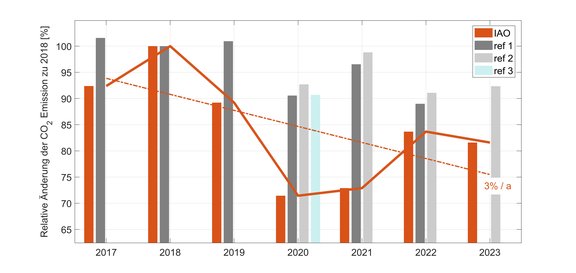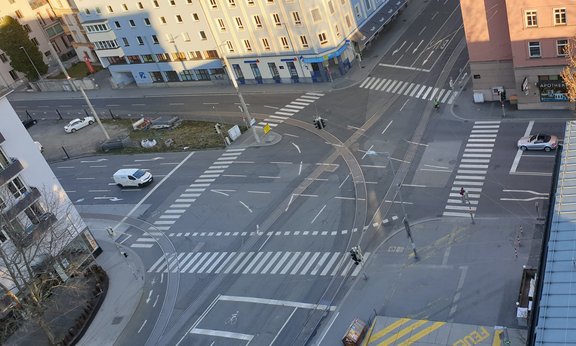Carbon dioxide emissions and trends are often calculated statistically using complex models. “The ability to validate these projections and annual budgets is becoming increasingly important if binding country targets for reducing greenhouse gas emissions are required,” says Thomas Karl from the Department of Atmospheric and Cryospheric Sciences at the University of Innsbruck. Under his leadership, emissions of the most important greenhouse gas carbon dioxide (CO2) have been continuously measured at the Innsbruck Atmospheric Observatory (IAO) since 2017. The measurements at the IAO's 40-metre-high tower in the city of Innsbruck, Austria, provide data on the composition of the urban atmosphere. “These observations can be considered representative for the alpine-urban area,” says atmospheric researcher Thomas Karl.
Several international studies show that CO2 emissions in Innsbruck lie within the typical European urban average and primarily come from the building, commercial and transport sectors. „Measures to contain the coronavirus pandemic have also created an unprecedented situation during which we were able to test model forecasts,” says Thomas Karl. Carbon dioxide emissions are quantified at the Innsbruck Atmospheric Observatory using a special technique known as the eddy covariance method. This method allows to quantify CO2 sources, or sinks, above a specific area. The latest analysis for the past seven years (2017-2023) shows significant changes over time.

CO2 emissions measured in Innsbruck (red) show a sharp decline during the pandemic. However, the levels since then have also been significantly lower than before the pandemic. Previous model calculations deviate significantly from the data actually measured. Overall, the figures from Innsbruck reflect an annual decrease in CO2 emissions of 3 %.
Significant reduction in carbon dioxide emissions
“The decline during the pandemic was much more pronounced in Innsbruck than projected by various model calculations of Austria-wide greenhouse gas budgets and international budgets for Austria,” explains Thomas Karl. The measurements in Innsbruck are representative of the main urban emission sectors of transport and residential, public, and commercial buildings. In general, emissions have fallen by 20% since 2018. The pandemic years of 2020 and 2021were characterized by a reduction in mobility, showing significantly greater declines (up to 30%) than forecasted. “These differences could be due to uncertainties in the projections or regional differences,” says atmospheric researcher Thomas Karl. Important measures to reduce greenhouse gases in the building sector include better thermal insulation and switching to heat pumps. Due to its geographical location, transit traffic and fuel tourism also play an important role in western Austria.
Observational data, such as those collected at the IAO and across other European cities, are playing an increasingly important role for validating carbon footprint calculations. The COPERNICUS earth observation program founded by the European Commission and ESA plans to use such ground-based data to interpret space-based observations in the future. The IAO experimental team led by Thomas Karl includes Christian Lamprecht, Michael Stichaner and Werner Jud. The current measurements are funded by the European Space Agency ESA and the Austrian Science Fund FWF.
The data has been published in the European Fluxes Database: gaia.agraria.unitus.it
Publication on the method: Decoupling of urban CO2 and air pollutant emission reductions during the European SARS-CoV-2 lockdown. Christian Lamprecht, Martin Graus, Marcus Striednig, Michael Stichaner, and Thomas Karl. Atmospheric Chemistry and Physics 21, 3091–3102 (2021) DOI: 10.5194/acp-21-3091-2021

